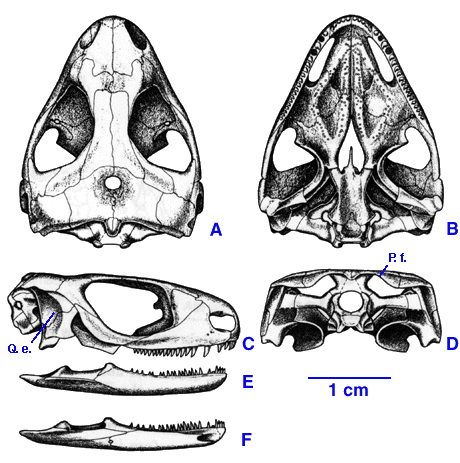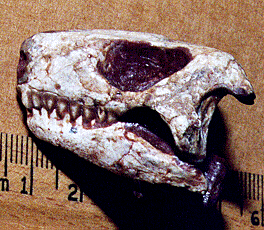
Procolophonoids (PRO-col-oh-phon-oids) are an extinct group of anapsids known from the Upper Permian and the Triassic. They had a nearly cosmopolitan distribution and have been found in North America, Europe, Asia, Africa, and Antarctica. The affinities of procolophonoids have long been debated. They were at some point thought to be close relatives of the clade Reptilia (the smallest group that includes turtles, diapsids, and their most recent common ancestor), but they are now considered to be most closely related to turtles, as shown by the presence of a large posttemporal fenestra (an opening in the back of the skull through which the jaw muscles of turtles exit the skull). Their exact position in Anapsida is still controversial. Some consider procolophonoids to be the closest known extinct relatives of turtles, while others think that pareiasaurs are more closely related to turtles.

The presence of a deep quadrate emargination (see the picture below) and a slender stapes (a sound-conducting middle ear ossicle) suggests that procolophonoids had a tympanum (ear drum) and could hear high frequency airborne sounds.
If you're interested in taking a closer look at the Procolophono idea, try our Procolophonoidea Morphology page.



